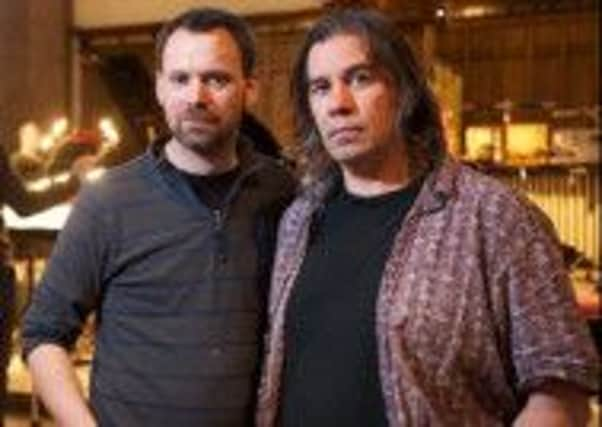Does crowdsourcing create worthwhile new music?


I had just heard the premiere of American composer and music technologist Tod Machover’s Festival City, a piece assembled for this year’s Edinburgh International Festival and crafted by the Massachusetts Institute of Technology (MIT) professor from soundbites recorded and submitted via the web from every corner of the planet – effectively a work devised by social media.
Gimmick, or credible work of art? And genuinely, how much of the submitted material – including traffic noise, the one o’clock gun, and flecks of music from bygone Edinburgh Festivals – made it into the final mix, cast as a technological wash of electronica around the robust framework of a live orchestral score? Hard to tell. But it did give the impression of a work written by committee, albeit signed off by the casting vote of a master chairman.
Advertisement
Hide AdGiven I’m of a generation that plays cautiously with Facebook or Twitter, I’m bound to be sceptical of social media’s value in achieving creative musical results. So I asked composer John Harris and cellist Robert Irvine, neither of them much younger than me, but as co-directors of Scotland’s most exclusively contemporary ensemble Red Note, naturally comfortable with living, performing and thinking out of the box.
Their musical credentials are impeccable, borne out in an upcoming appearance at the flag-waving Huddersfield Contemporary Music Festival, where Red Note will premiere, in November, new works by Glasgow-born James Dillon (New York Triptych, the final piece of the trilogy which first emerged in 2009), and a major new commission by Glasgow-based Irish composer David Fennessy. This is an ensemble that pushes boundaries and takes risks, particularly when it comes to soliciting creative input from the general public, both young and old.
Last weekend, for instance, the latest of Red Note’s Noisy Nights series featured music by pupils from King’s Park Secondary School, Glasgow (linked to their music higher composition course) in Noisy Nights Jr at the City Halls; while on Monday, at Edinburgh’s Traverse Theatre, the focus was on the adult version, with wannabe composers invited to submit completed scores and parts for performance.
In a way, this was a traditional form of social media, inasmuch as the call went out to the general public, and the compositions came rolling in, even as late as the day of performance. Granted, the “social media” aspect was simply the form of delivery of a finished article, be it good or bad. So what do Harris and Irvine make of the Machover-style community composition that seemed almost Stalinist in its committee conception?
They are certainly qualified to have an opinion, given Red Note’s involvement in Noisy Noises, part of Social Media Week at last year’s Sound Festival in Aberdeen, for which the public were asked to record and e-mail clips of their favourite noises. This, said the blurb, “could be anything from a child laughing, to a coffee machine steaming milk, a door bell ringing or a champagne cork popping.” The aim was to demonstrate, by way of social media, “the artistic power of a connected society and showcase the noises that reflect our lives in the digital age”. Very similar, in fact, to Machover’s Festival City project.
Harris – who found he had to kickstart the Aberdeen project by submitting a recording of his own daughter singing Twinkle, Twinkle Little Star – is left unconvinced by the creative value of both projects.
Advertisement
Hide Ad“It would take a composer of extraordinary and rare genius to make something non-trivial out of this. The problem with social media is that it is crowdsourced and, not to be too rude about the general public, geniuses are in short supply,” he says. “Listening to the Edinburgh project, a lot of what was suggested – bagpipes and the one o’clock gun – was quite trite; it felt like a piece written for tourists.”
“There’s something very surface about social media,” Harris adds. “You don’t get results; people never really bare their souls; it’s too public.”
Advertisement
Hide AdBoth Red Note directors doubt even the power of Facebook as the ultimate audience-building tool. “St Andrews University undertook research for us on what effect social media had on our audiences, and surprisingly found it not to be the be all and end all. People still, it seems, like a nice brochure to browse through over a good coffee,” says Harris.
All of which seems to suggest that social media can be a lot of good fun, and certainly has its place in getting people interested in the process of musical creativity and performance. But replace the creative voice of the inspired individual? Never.